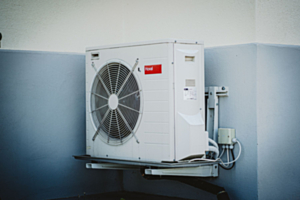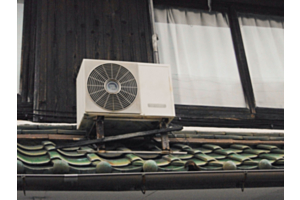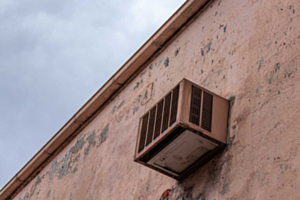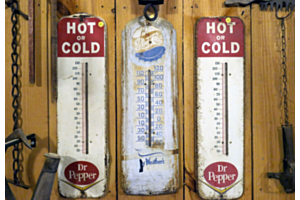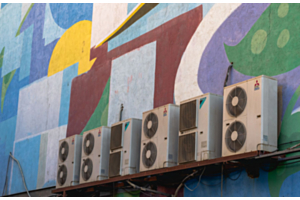What Is a VRF System?

You’re familiar with standard heating and air conditioning units. Through this blog, you’ve become acquainted with ductless mini split systems as well. A coworker of yours recently told you about a VRF system they got installed in their home, which has you curious. What is a VRF system?
In today’s post, we’ll tell you all that and more. Think of this article as your VRF systems 101!
What Is a VRF System?
A VRF system is short for a Variable Refrigerant Flow system. You may also hear of a VRF system being called a Variable Refrigerant Volume or VRV system. Created in 1982 by a company called Daikin Industries Ltd., VRF systems work in a way akin to ductless VRF systems work much like multi zone systems, because it can handle several indoor units with one outdoor unit. Mini Split Systems are always 1 to 1 condenser and indoor unit. The main difference however between VRF and Multi Zone systems have is the capacity to use one outdoor unit with several indoor units.
How Does a VRF System Work?
A VRF system includes a condenser unit. Ductless minisplits as VRF systems work taking fresh air and passing it through the condenser coil. Both can be installed indoor but both have to have fresh air inlet and a condensated (hot/cold) air outlet.
The refrigerant circulates through all the system. Depending on the mode it is set to, cooling or heating, it will perform the condensating process in the indoor unit or in the outdoor unit. The same will happen with the evaporating process. The exact air temperature can vary per area.
VRF systems use a system called a “diversity factor” which means that when you have 10 indoor units each one being 1 ton, you can install a single outdoor for 8 ton. Making this system a 120% diversity factor. So when the refrigerant in one indoor unit is not required because it already reached its temperature goal, that surplus of refrigerant will be sent to the indoor unit that actual needs more refrigerant to reach the desired goal.
VRF systems also include pipes, either two or three pipes. The two-pipe system is the simpler of the two and requires each of the zones to be used solely for heating or solely for cooling. A three-pipe system is a heat recovery system that can both heat and cool space at the same time from the one system, however it can only be at a 50% cooling and 50% on heating. It cannot be unbalanced.
Should You Consider a VRF System for Your Home or Office?
If you are looking for a new heating and cooling solution, might it be a VRF system? Here are some reasons to consider such a system.
Temperature Control & Diversity Factor
The big advantage to VRF systems however is the diversity factor mentioned earlier in this article
Simultaneous Heating and Cooling
To reiterate, with a three-pipe VRF split system, you can cool parts of the home or office and then heat others simultaneously. This can come in handy in a large building such as a warehouse. Even at home, you might appreciate being able to heat parts of the house and cool others.
For example, do you have a two-story home? Heat rises, so the upstairs rooms could be cooled while the downstairs ones are heated.
Great Energy Savings
Although you would think that heating and cooling a building at the same time would suck up energy, that’s not the case with a VRF split system. You might be able to save energy at an astounding rate of 55 percent!
Sources:
http://seedengr.com/Variable%20Refrigerant%20Flow%20Systems.pdf
https://en.wikipedia.org/wiki/Variable_refrigerant_flow


